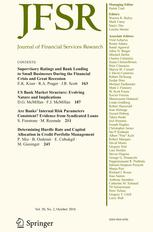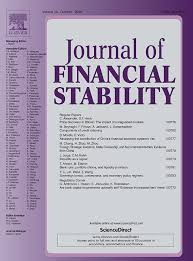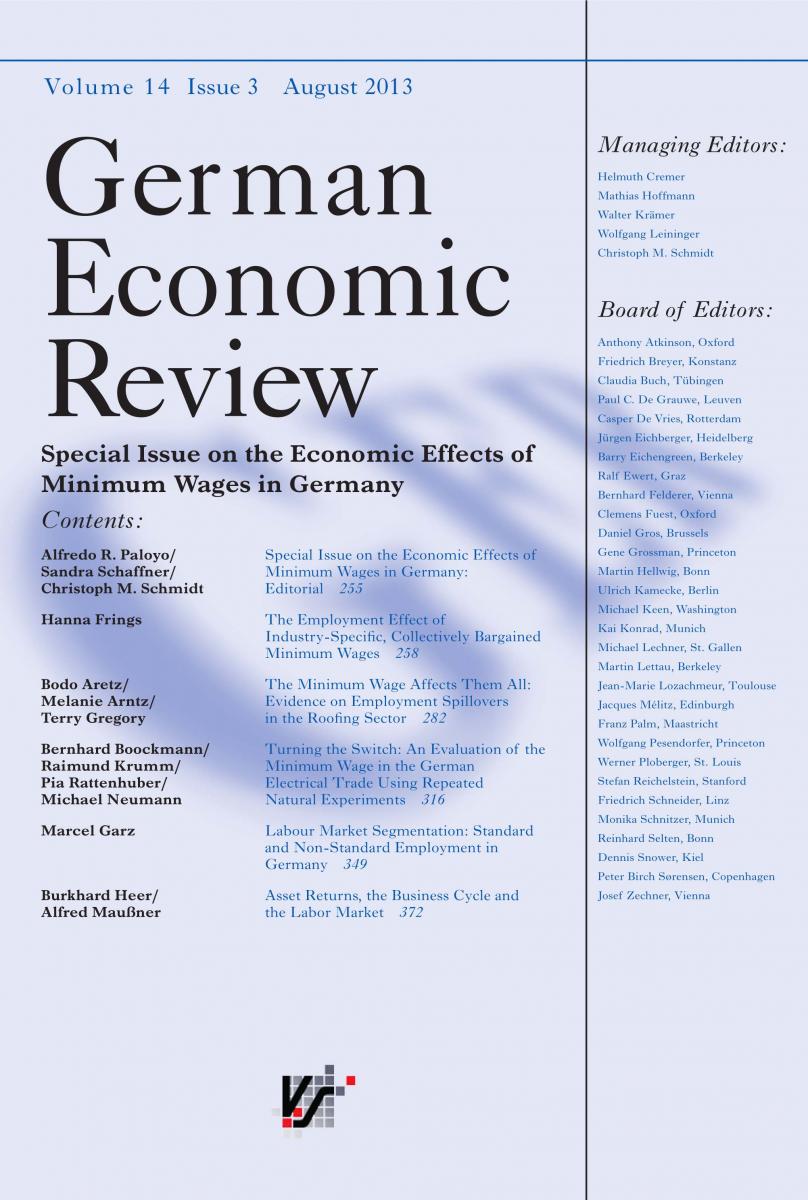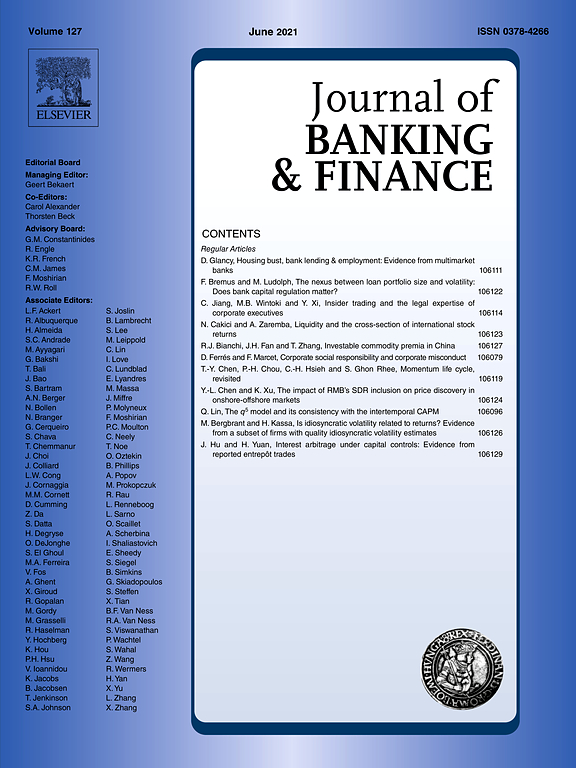Anpassungsfähigkeit und Resilienz des Finanzsystems
Diese Forschungsgruppe untersucht kritische Aspekte der Anpassungsfähigkeit und Widerstandsfähigkeit von Finanzsystemen. Sie analysiert die Auswirkungen von Naturkatastrophen auf Finanzsysteme, die Auswirkungen politischer Präferenzen für die grüne Transformation und die Bedeutung von Kultur in den Volkswirtschaften.
Forschungscluster
Finanzresilienz und RegulierungIhr Kontakt

- Abteilung Finanzmärkte
PROJEKTE
08.2022 ‐ 07.2025
OVERHANG: Schuldenüberhang und grüne Investitionen – die Rolle von Banken für den klimafreundlichen Umgang mit emissionsintensiven Anlagenvermögen
Bundesministerium für Bildung und Forschung (BMBF)
Ziel von OVERHANG ist es, die Rolle von Banken für den klimafreundlichen Umgang mit emissionsintensiven Anlagevermögen zu untersuchen. Hierdurch sollen politikrelevante Erkenntnisse zu Finanzregulierung, staatlich kontrollierter Kreditvergabe und Finanzstabilität identifiziert sowie eine Sensibilisierung der verschuldeten Akteurinnen und Akteuren erreicht werden.
Das Projekt wird vom Bundesministerium für Bildung und Forschung (BMBF) finanziert.
01.2015 ‐ 12.2019
Interactions between Bank-specific Risk and Macroeconomic Performance
Deutsche Forschungsgemeinschaft (DFG)
07.2016 ‐ 12.2018
Relationship Lenders and Unorthodox Monetary Policy: Investment, Employment, and Resource Reallocation Effects
Leibniz-Gemeinschaft
We combine a number of unique and proprietary data sources to measure the impact of relationship lenders and unconventional monetary policy during and after the European sovereign debt crisis on the real economy. Establishing systematic links between different research data centers (Forschungsdatenzentren, FDZ) and central banks with detailed micro-level information on both financial and real activity is the stand-alone proposition of our proposal. The main objective is to permit the identification of causal effects, or their absence, regarding which policies were conducive to mitigate financial shocks and stimulate real economic activities, such as employment, investment, or the closure of plants.
Referierte Publikationen

Why Do Banks Provide Leasing?
in: Journal of Financial Services Research, Nr. 2, 2014
Abstract
Banks are engaging in leasing activities at an increasing rate, which is demonstrated by aggregated data for both European and U.S. banking companies. However, little is known about leasing activities at the bank level. The contribution of this paper is the introduction of the nexus of leasing in banking. Beginning from an institutional basis, this paper describes the key features of banks’ leasing activities using the example of German regional banks. The banks in this sample can choose from different types of leasing contracts, providing the banks with a degree of leeway in conducting business with their clients. We find a robust and significant positive impact of banks’ leasing activities on their profitability. Specifically, the beneficial effect of leasing stems from commission business in which the bank acts as a middleman and is not affected by the potential defaults of customers.

IT Use, Productivity, and Market Power in Banking
in: Journal of Financial Stability, Nr. 4, 2013
Abstract
Information management is a core process in banking that can resolve information asymmetries and thereby help to mitigate competitive pressure. We test if the use of information technology (IT) contributes to bank output, and how IT-augmented bank productivity relates to differences in market power. Detailed bank-level information on the use of IT reveals a substantial upward bias in bank productivity estimates when ignoring banks’ IT expenditures. IT-augmented bank productivity correlates positively with Lerner markups. A mere increase in IT expenditures, however, reduces markups. Results hold across a range of bank output definitions and productivity estimation methods.

Has Labor Income Become More Volatile? Evidence from International Industry-Level Data
in: German Economic Review, Nr. 4, 2013
Abstract
Changes in labor market institutions and the increasing integration of the world economy may affect the volatility of capital and labor incomes. This article documents and analyzes changes in income volatility using data for 11 industrialized countries, 22 industries and 35 years (1970–2004). The article has four main findings. First, the unconditional volatility of labor income has declined in parallel to the decline in macroeconomic volatility. Second, the industry-specific, idiosyncratic component of labor income volatility has hardly changed. Third, cross-sectional heterogeneity is substantial. If anything, the labor incomes of high- and low-skilled workers have become more volatile relative to the volatility of capital incomes. Fourth, the volatility of labor income relative to the volatility of capital income declines in the labor share. Trade openness has no clear-cut impact.

Default Options and Social Welfare: Opt In versus Opt Out
in: Journal of Institutional and Theoretical Economics JITE, Nr. 3, 2013
Abstract
We offer a social-welfare comparison of the two most prominent default options – opt in and opt out – using a two-period model of localized competition. We demonstrate that when consumers stick to the default option, the prevailing default policy shapes firms' ability to collect and use customer information, and affects their pricing strategy and entry decision differently. The free-entry analysis reveals that fewer firms enter under opt out as competition becomes harsher, and that opt out is the socially preferred default option.

Financial Constraints of Private Firms and Bank Lending Behavior
in: Journal of Banking and Finance, Nr. 9, 2013
Abstract
We investigate whether and how financial constraints of private firms depend on bank lending behavior. Bank lending behavior, especially its scale, scope and timing, is largely driven by bank business models which differ between privately owned and state-owned banks. Using a unique dataset on private small and medium-sized enterprises (SMEs) we find that an increase in relative borrowings from local state-owned banks significantly reduces firms’ financial constraints, while there is no such effect for privately owned banks. Improved credit availability and private information production are the main channels that explain our result. We also show that the lending behavior of local state-owned banks can be sustainable because it is less cyclical and neither leads to more risk taking nor underperformance.
Arbeitspapiere

Corporate Governance Structures and Financial Constraints in Multinational Enterprises – An Analysis in Selected European Transition Economies on the Basis of the IWH FDI Micro Database 2013 –
in: IWH Discussion Papers, Nr. 3, 2015
Abstract
In our analysis, we consider the distribution of decision power over financing and investment between MNEs’ headquarters and foreign subsidiaries and its influence on the foreign affiliates’ financial restrictions. Our research results show that headquarters of multinational enterprises have not (yet) moved much decision power to their foreign subsidiaries at all. We use data from the IWH FDI Micro Database which contains information on corporate governance structures and financial restrictions of 609 enterprises with a foreign investor in Hungary, Poland, the Czech Republic, Slovakia, Romania and East Germany. We match data from Bureau van Dijk’s AMADEUS database on financial characteristics. We find that a high concentration of decision power within the MNE’s headquarter implicates high financial restrictions within the subsidiary. Square term results show, however, that the effect of financial constraints within the subsidiary decreases and finally turns insignificant when decision power moves from headquarter to subsidiary. Thus, economic policy should encourage foreign investors in the case of foreign acquisition of local enterprises to leave decision power within the enterprise and in the case of Greenfield investment to provide the newly established subsidiaries with as much power over corporate governance structures as possible.



















